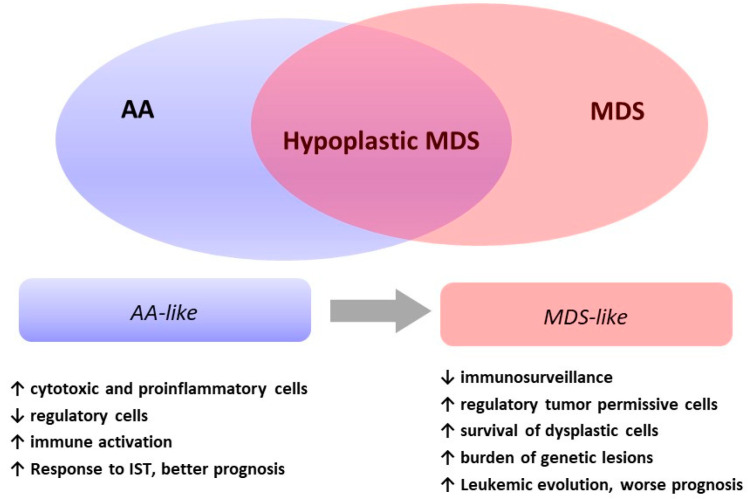Figure 1.
The two phenotypes of hypoplastic myelodysplastic syndromes (hMDS). Clinical features and immunologic and molecular studies identify two phenotypes of hMDS: one with prevailing inflammation and immune activation (increased cytotoxic T cells, CTLs, and T helper 1 cells, Th1, mastocytes, and proinflammatory monocytes; decreased T and B regulatory cells, Tregs and Bregs; type 1 mesenchymal stem cells, MSCs; and higher prevalence of autoantibodies and PNH clones) that we defined AA-like and the other dominated by genetic lesions, clonal selection, and leukemic evolution, named MDS-like. The evolution from one phenotype to the other is marked by a progressive decrease of proinflammatory/proapoptotic immune effectors and an increase of regulatory suppressive cells as well as a shift from type 1 (proinflammatory) to type 2 MSCs (tumor-facilitating), which enable clone selection and tumor escape.

